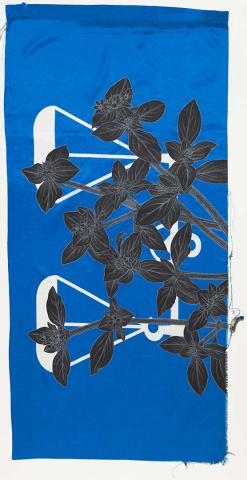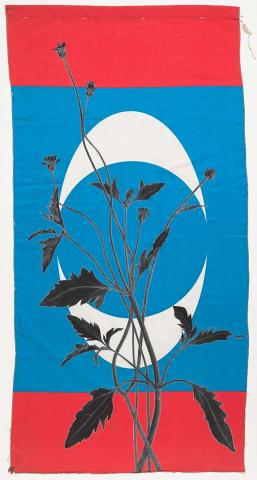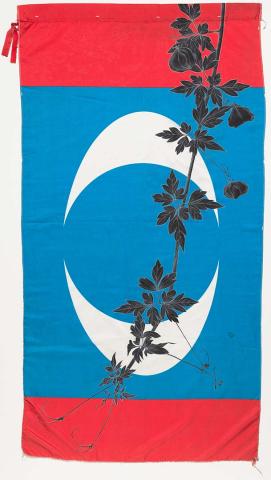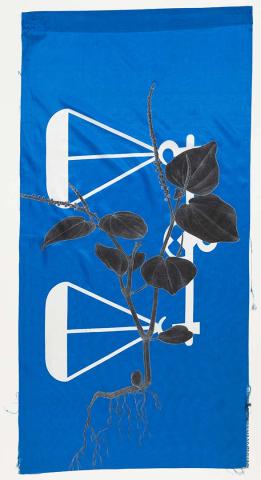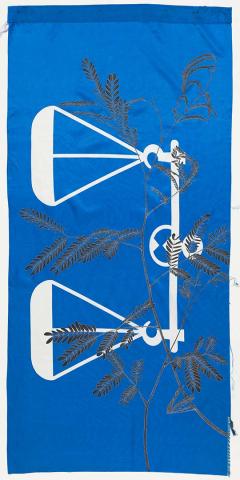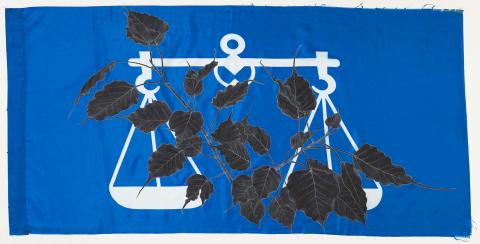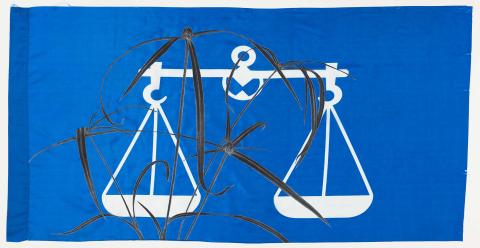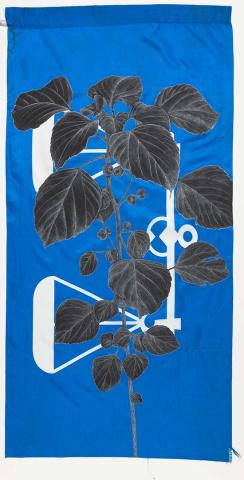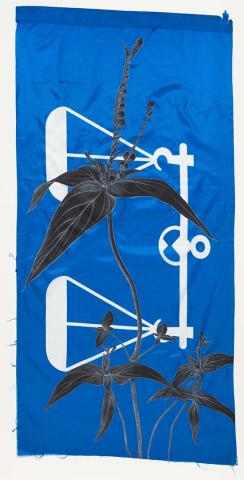Sharon Chin: ‘Weeds/Rumpai' series
For ‘Weeds/Rumpai’, Sharon Chin collected the political party flags that were hung on trees, lampposts and street signs in her hometown of Port Dickson, Malaysia, prior to a 2012 national election, and painted over them with images of weeds from her own garden. The number of banners from the ruling Barisan Nasional party (blue and white) versus the main opposition, People’s Alliance coalition (red, blue and white), is proportional to the number of banners each party erected in Port Dickson during the campaign. Chin is interested in the way in which weeds survive and thrive in adverse conditions; as a symbol of the resolute stubbornness of everyday existence, she contrasts them with the flag’s association with political power. The plants have a natural beauty, as well as a sense of the uncontrollable and the inevitable – a powerful metaphor for dissent. In discussing the work, Chin comments: ‘we are the weeds . . . we are in the buildings, the cracks, the fields, the roadsides . . . we are many and not alone’.
